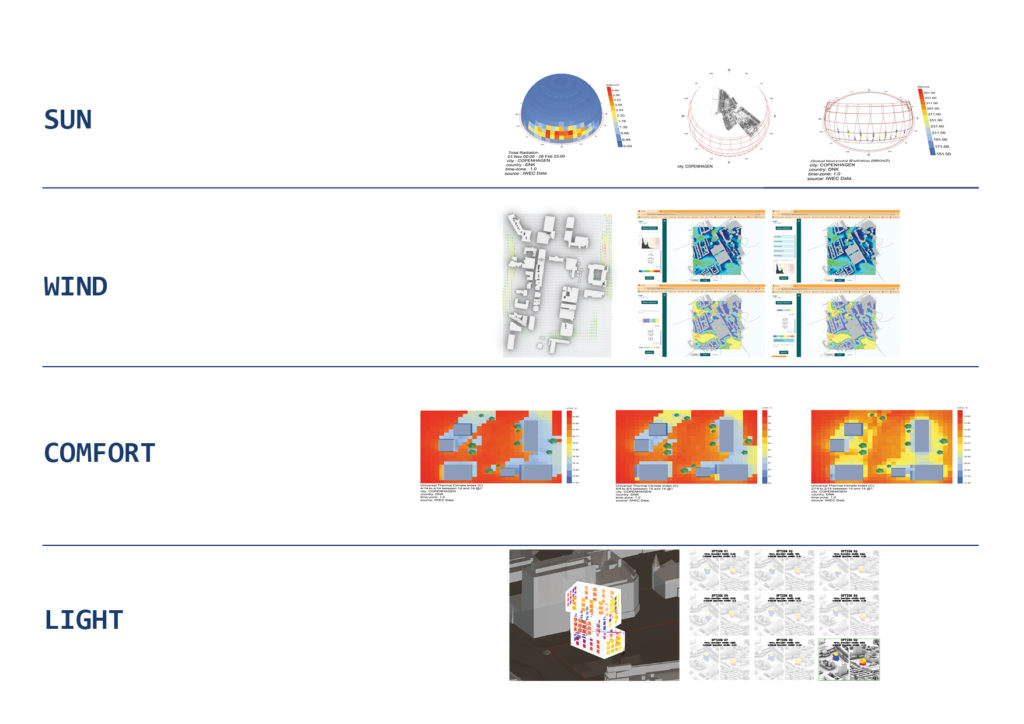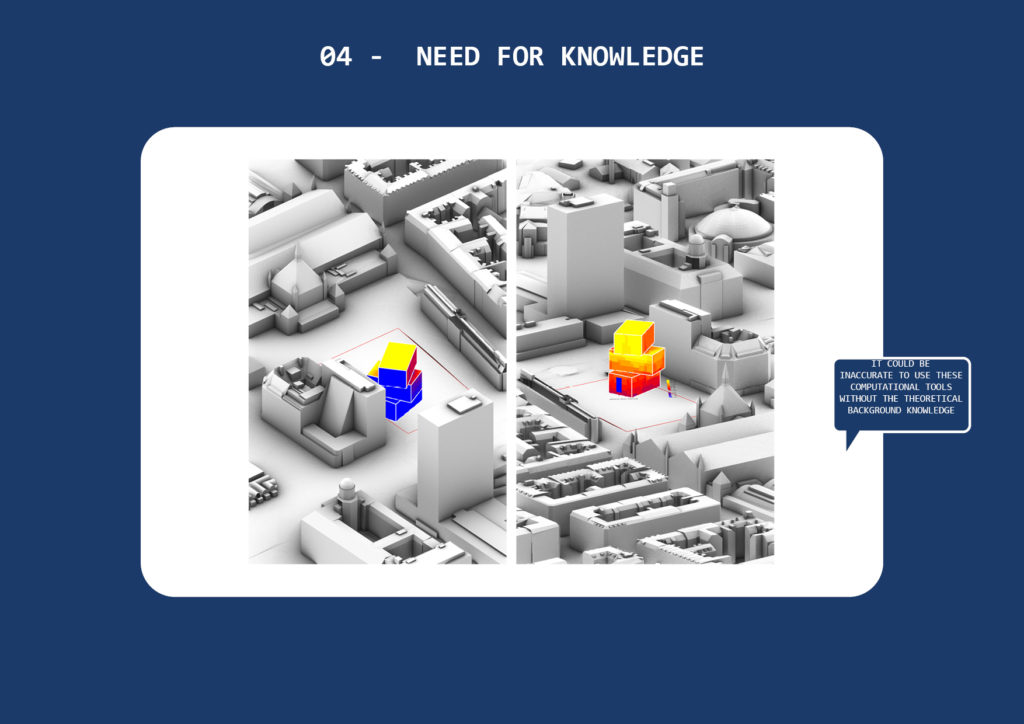The aim of this blogpost is to summarize the tasks and tools practiced during the course of the S1 Seminar: Digital Tools for Environmental Analysis and reflect on the overall learnings, advantages and disadvantages of each.

During the course of the semester, I have explore tools for analysis and optimization of elements related to sun, wind, comfort and light. By basing the majority of my studies on Copenhagen, I have definitely learnt so much in terms of how to understand, analyze, and optimize for climate factors. One thing I find myself critically thinking about, however, is that we should not take these tools for granted, so I have gathered some key takeaway points from my own explorations.
Filtering Results
It is only relevant to perform environmental analyses and studies if we are able to filter the results that we get and classify certain conditions. The filtering parameters will vary from one climate condition to the other and from one purpose of study to the other. For these reasons, it can sometimes be irrelevant to generically apply the same kind of study and analysis period to all environmental research. Filtering results can also be a way to further focus the analysis as we progress from one analysis to the next during the course of one project.

Informed Simulation
Although it is useful to plot and anticipate certain experiences on a site by using many simulation tools, we can not always use the same kind of studies for all analysis cases. Some studies might be irrelevant for certain locations and more relevant for others. For example, in the case below, aa UTCI analysis result concluded that it is always uncomfortable in all outdoor areas, rather than resulting in a gradient. This is due to an extreme weather condition and could indicate that this might not be the right kind of simulation to further understand this specific location. Rather, a wind simulation could be more informative.

Intersectionality of Studies
I find it also relevant to consider the intersectionality of studies. We might try to optimize the climate conditions for a certain element, and we might do that by analyzing and optimizing for one study and one time. But this would also affect the experience of other elements at other times of the day or year. This is why it is important after obtaining an “optimized” environmental condition for one study to always reflect and compare the result under other conditions and during other periods.

Need for Knowledge
It could be inaccurate to use some computational tools without the theoretical background knowledge. We cannot begin to use some terminologies and classifications without first understanding the concepts and definitions behind some environmental metrics. An example from my explorations is the daylight study seen below, where the gradient of colors is supposedly representing the daylight hours on the facades of this massing. The blue color that represented almost no daylight on the back facades stood out to me, because it did was not too realistic in the case of study. Although the entire Grasshopper script seemed rather accurate to the study, I was performing, and I could have taken this as an accurate analysis had I not been thinking critically about the result. The issue turned out to be that my geometry was too far away from the origin, and this contributed to an inaccurate analysis. From this experience, the importance of the theory behind environmental analyses was only reiterated.

Human Factor
It is quite critical to find a balance between environmental optimization and design intent. After finding what could seemingly be the most environmentally ideal geometry, it is also important to re-evaluate it from a design point of view and ensure that it still falls in line with the concepts and values of the design intent and that it would not present any absurd architectural conditions.


